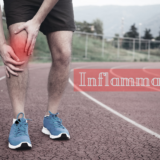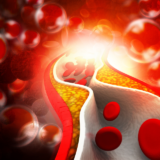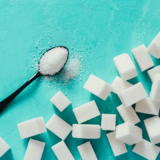Fiber and Health





Fiber and Health
Dietary fiber refers to the edible parts of plants or carbohydrates that cannot be digested. Fiber is in all plant foods, including fruits, vegetables, grains, nuts, seeds, and legumes.
Fiber is a type of carbohydrate that the body can’t digest. Unlike other food components, such as fats, proteins or carbohydrates — which your body breaks down and absorbs — fiber isn’t digested by your body. Instead, it passes relatively intact through your stomach, small intestine and colon and out of your body.
The main role of fiber is to keep the digestive system healthy. It is vital to the body in its role of regulating bowel functions, reducing the risk of intestinal problems and promoting feeling of fullness. Fiber helps regulate the body’s use of sugars, helping to keep hunger and blood sugar in check. Fiber is also important for weight management, cholesterol maintenance, stabilizing glucose, digestion and regularity. A diet high in dietary fiber gives additional health benefits – lower risk of developing coronary heart disease, stroke, hypertension, diabetes, obesity, and certain gastrointestinal diseases. Increasing fiber intake lowers blood pressure and serum LDL cholesterol levels.
The recommended dietary fiber intakes for both children and adults are 14 g/1000 kcal , or, roughly 25 g to 30 g of fiber per day.
Conditions linked to low-fiber diets
Eating a diet low in fiber can contribute to many disorders, including:
- Irritable Bowel Syndrome – pain, flatulence and bloating of the abdomen
- Overweight and Obesity – carrying too much body fat
- Coronary Heart Disease – a narrowing of the arteries due to fatty deposits
- Diabetes – a condition characterized by too much glucose in the blood
- Constipation – small, hard and dry faecal matter that is difficult to pass
- Duodenal Ulcer – ulcer that occurs in the lining in the part of the small intestine
- Hemorrhoids – varicose veins of the anus
- Diverticulosis – small hernias of the digestive tract caused by long-term constipation
- Colon Cancer – cancer of the large intestine.
Types of fiber in food
There are two categories of fiber and both should be included in our daily diets – soluble fiber and insoluble fiber.
Soluble fiber:
Soluble fiber includes Pectin’s, Gums and Mucilage’s, which are found mainly in plant cells. Soluble fiber soaks up water like a sponge, which helps to bulk out the faeces and allows it to pass through the gut more easily thus alleviating constipation.
It also acts to slow down the rate of digestion. Thus increased intake of soluble fiber improves glycaemia and insulin sensitivity.
One of its major roles is to lower LDL (bad) cholesterol levels.
Good sources of soluble fiber include fruits, vegetables, oat bran, barley, seed husks, flaxseed, psyllium husk, dried beans, lentils, peas, soy milk and soy products.
Insoluble Fiber:
Insoluble fiber includes cellulose, hemicelluloses and lignin, which make up the structural parts of plant cell walls.
A major role of insoluble fiber is to add bulk to faeces and to prevent constipation and associated problems such as hemorrhoids. Unlike soluble fiber, insoluble fiber does not absorb water and speeds up the time that food takes to pass through the gut.
Good sources include wheat bran, corn bran, rice bran, the skins of fruits and vegetables, nuts, seeds, dried beans and wholegrain foods.
Both types of fiber are beneficial to the body and most plant foods contain a mixture of both types.
Resistant Starch:
Resistant starch is the part of starchy food (approximately 10 per cent) that resists normal digestion in the small intestine. So, even though it’s not a fiber in true sense, it acts like it.
Resistant starch is found in many unprocessed cereals and grains, unripe bananas, potatoes and lentils, and is added to bread and breakfast cereals as Hi-Maize. It can also be formed by cooking and manufacturing processes such as snap freezing.
Resistant starch is also important in bowel health. Bacteria in the large intestine ferment and change the resistant starch into short-chain fatty acids, which are important to bowel health and may protect against cancer. These fatty acids are also absorbed into the bloodstream and may play a role in lowering blood cholesterol levels.
Benefits of Fiber
Fiber and the Digestive System:
Fiber keeps the digestive tract healthy. The principal advantage of a diet high in fiber is in improving the health of the digestive system. From the moment food is swallowed, the GI tract is lined with muscles that move the food along the tract until the eventual waste is passed out of the bowel. This process is called peristalsis. Since fiber is relatively indigestible, it adds bulk to the faeces.
Increased fiber intake benefits a number of gastrointestinal disorders including the following:
- Gastro esophageal Reflux Disease(GERD)
- Duodenal Ulcer
- Diverticulitis
- Constipation
- Hemorrhoids
Prebiotic fibers appear to enhance immune function as well.
Fiber and diabetes:
A diet high in fiber reduces the speed by which glucose is absorbed from the small intestine into the blood. This reduces the possibility of a surge of insulin, the hormone produced by the pancreas to stabilize blood glucose levels.
Fiber and the Heart:
There is good evidence that soluble fiber reduces blood cholesterol levels. When blood cholesterol levels are high, fatty streaks and plaques are deposited along the walls of arteries making them dangerously narrow and leading to an increased risk of coronary heart disease. It is thought that soluble fiber lowers blood cholesterol by binding bile acids (which are made from cholesterol to digest dietary fats) and then excreting the same.
Fiber and weight control:
Fibrous foods are often bulky and, therefore, filling. A high-fiber diet is protective against weight gain. High-fiber foods tend to have a lower energy density, which means they provide fewer calories per gram of food. As a result, a person on a high-fiber diet can consume the same amount of food, but with fewer calories. Soluble fiber forms a gel that slows down the emptying of the stomach and the transit time of food through the digestive system. This extends the time a person feels satisfied or ‘full’. It also delays the absorption of sugars from the intestines. This helps to maintain lower blood sugar levels and prevent a rapid rise in blood insulin levels, which has been linked with obesity and an increased risk of diabetes.
Fiber and Colorectal Cancer:
Bacterial fermentation of fiber results in the production of short-chain fatty acids, which are thought to have protective effects against colorectal cancer. It is recognized that dietary fiber protects against colorectal cancer, each 10 g per day intake of total dietary fiber equates to a 10 per cent reduction in risk of colorectal cancer.
A word of caution though, high-fiber diet may not prevent or cure constipation unless it is accompanied by enough fluid. Lower intake of water may cause abdominal discomfort or constipation.
Also, a sudden switch from a low-fiber diet to a high-fiber diet can create some abdominal pain and increased flatulence. Very high-fiber diets (more than 40 g daily) have been linked with decreased absorption of some important minerals such as iron, zinc and calcium. This occurs when fiber binds these minerals and forms insoluble salts, which are then excreted.
This could increase the risk of developing deficiencies of these minerals in susceptible people.














5 comments
Anonymous
July 22, 2022 at 8:41 pm
Can I simply say what a comfort to find someone that actually understands what theyre discussing on the net. You actually realize how to bring a problem to light and make it important. More and more people really need to read this and understand this side of your story. I was surprised that youre not more popular since you definitely possess the gift.
Jean Michelle
August 23, 2022 at 9:39 am
Good post. I learn something new and challenging on blogs I stumbleupon everyday. It will always be interesting to read articles from other authors and use a little something from their sites.
Victoria Agnel
August 27, 2022 at 4:30 am
I must thank you for the efforts youve put in writing this site. I really hope to check out the same high-grade content from you in the future as well. In fact, your creative writing abilities has inspired me to get my very own site now 😉
Hurriya Siddiqui
June 28, 2023 at 5:24 pm
Your explanations are easy to follow, even for beginners.
Queen
April 22, 2024 at 6:48 am
Your writing is a true testament to your expertise and dedication to your craft. I’m continually impressed by the depth of your knowledge and the clarity of your explanations. Keep up the phenomenal work!